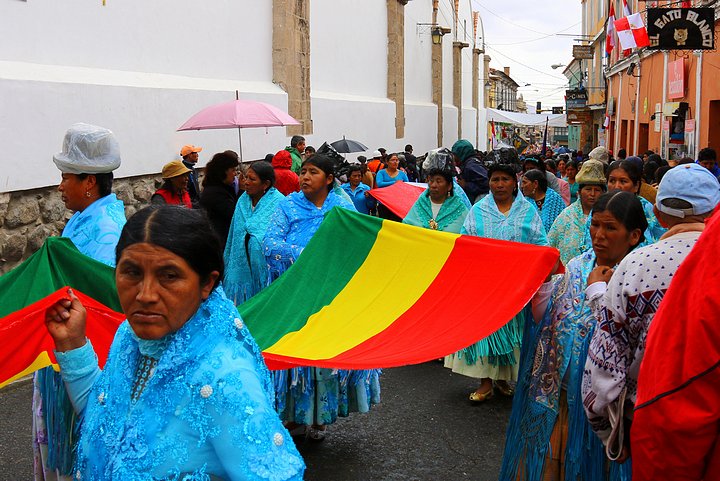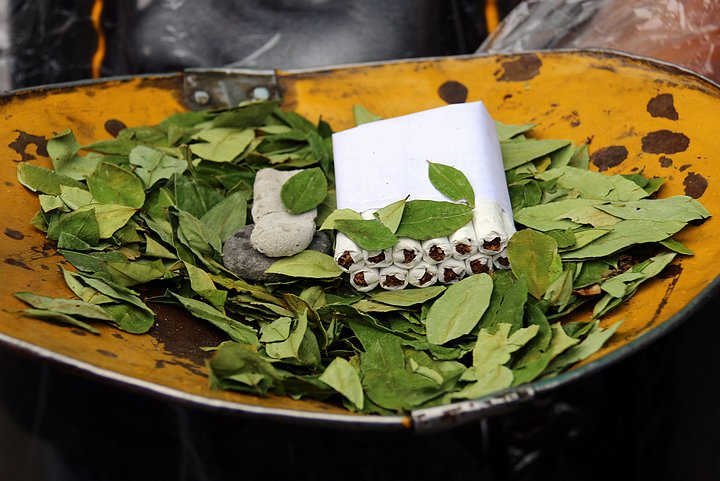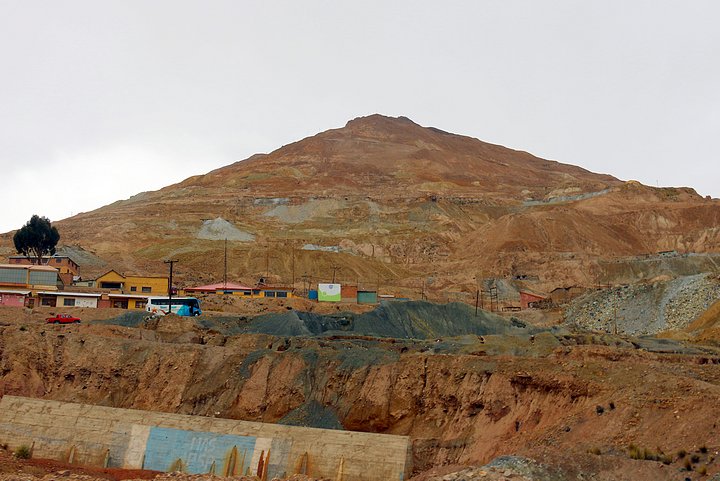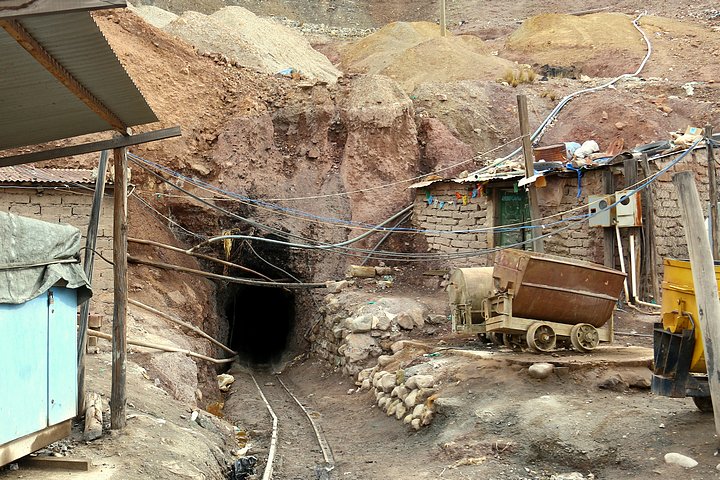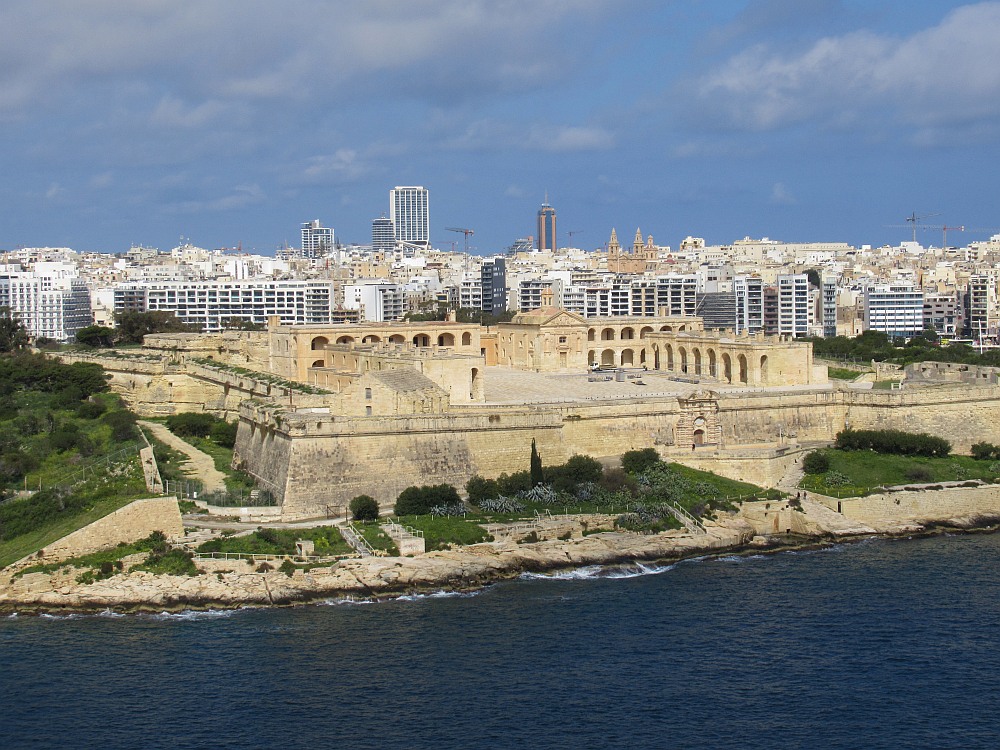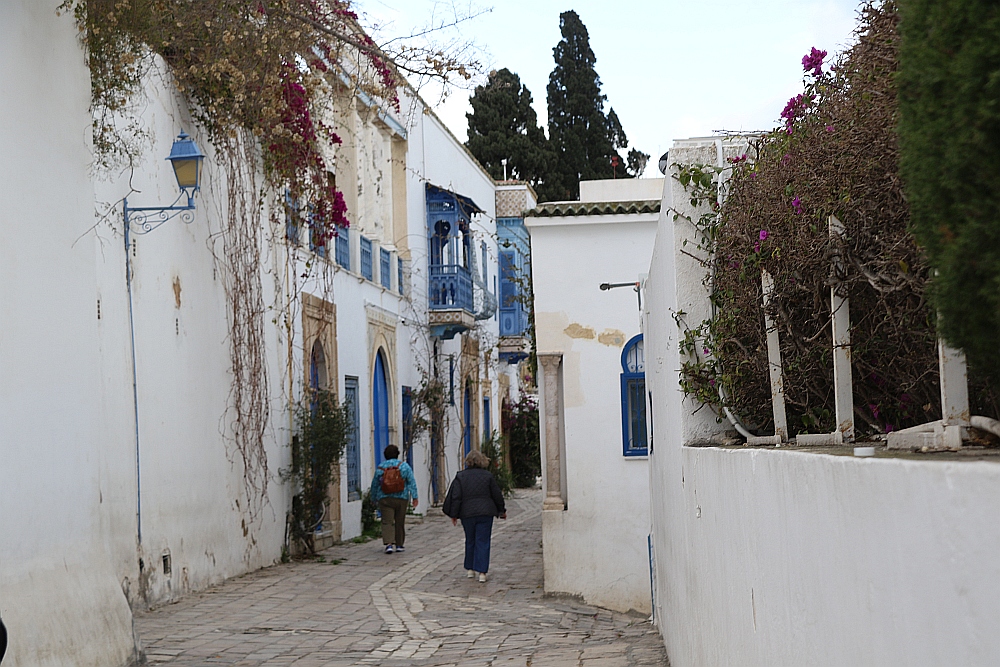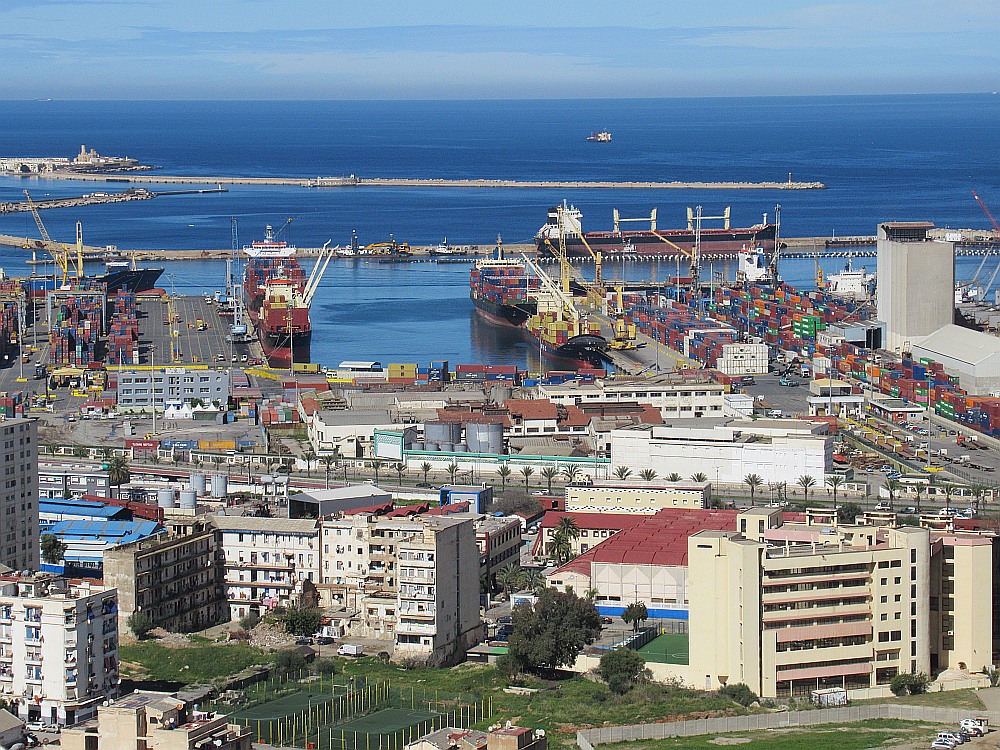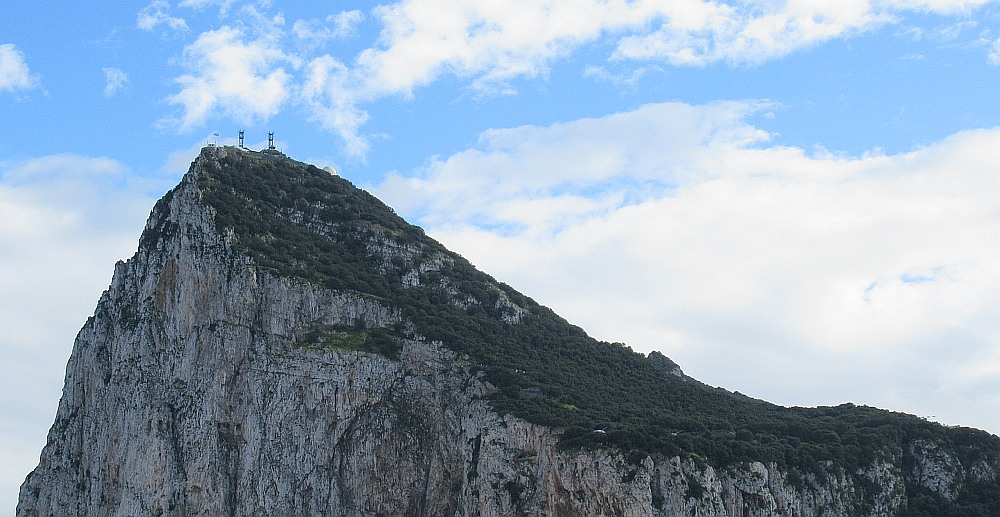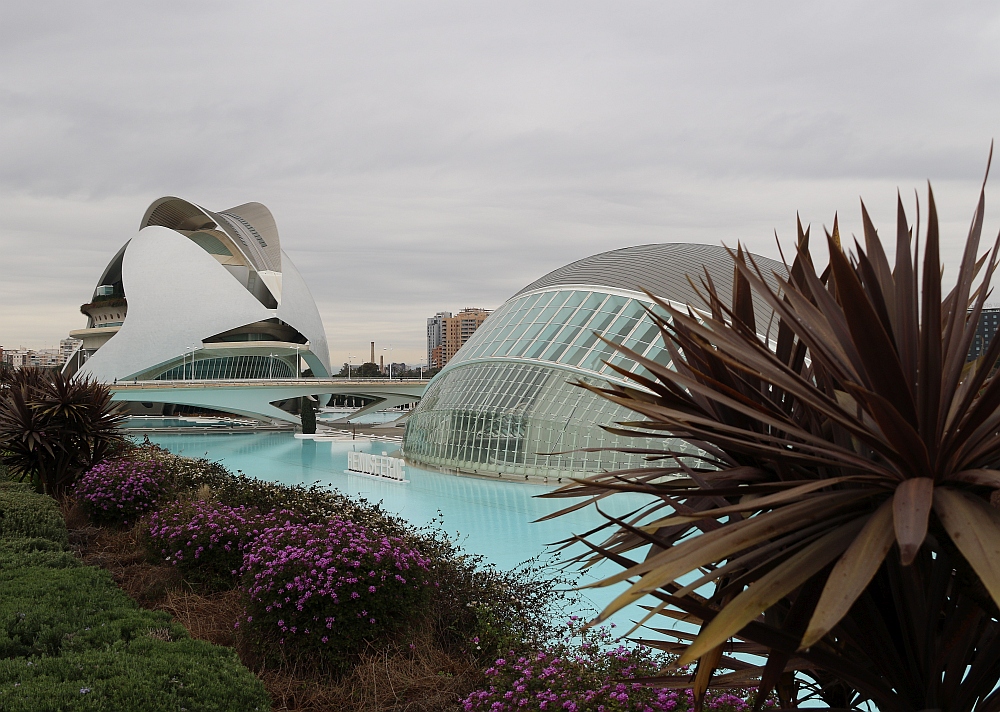Southern Peru-Bolivia Day 16
Southern Peru-Bolivia
Day 16 - Monday, November 10, 2014 - Overland to Potosi; High Altitude Views; Silver Mining; Cory Mayu Mine
The temperature was 62 degrees with 72% humidity on our last morning in Sucre. Although, the bags were to be out at 8:30, the porter knocked on the door at 8:00 to pick them up.
We left the hotel at 9:00; again everyone was on time. We had a new driver, Alan and a big bus with plenty of room for all!
Natalia told us more about the things we would be seeing during the day. As we passed the El Castillo de La Glorieta (The Castle of La Glorieta), we stopped for a few photos. It is now a military school so we could not go in for a visit.
The valleys and hillsides were very green at this altitude. Lush gardens and orchards indicated that this micro-climate had adequate water but only one growing season.
As we climbed out of the valley and began our ascent, the hillsides became steeper, the vegetation was sparser and the highway was more winding.
First stop was an overlook above the Pilcomayo River and the Chuquisaca Bridge. Built in 1826; it was once a vital connection between the two bordering departments.
Our morning stop for restrooms was at 10:30 at the tiny village of Millares. Just a wide spot in the road next to the tollbooth, there was one little shop and a public toilet.
As Pepé reminded us we are in the tropics and the altitude controls the temperatures. In the low valleys it is very warm and at higher altitudes, the temperature is much colder.
Alan pushed our old diesel bus around the curves and up the steep hills. There are center stripes and double yellow lines that "suggest" no passing zones. Cars, trucks, and buses seem to ignore them. Alan had to avoid a hobbled donkey in the middle of the road and stop for a herd of goats.
At the top of the Altiplano, the flat highlands of 10,700 feet, the dry fields of potatoes, fava beans, and quinoa await the spring rains. Shepherds stood in the dry, dusty pastures guiding their flocks to find greens to nibble.
The next photo stop was at Betanzos overlooking the river and green valley. Water is the giver of life! We passed several small towns on the way to Potosi, if there was water or irrigation, there was green life, if not there was dust.
As we got closer to Potosi, Natalia explained the transport of the minerals of silver, tin, and lead. They come out of the mine and then were refined and then moved by rail for sale.
We thanked Natalia and Alan who went directly back to Sucre. We had 30 minutes to organize ourselves and then we all met for our walk to the El Fogon Restaurant for lunch. We met our new guide, Juan Carlos, or JC. That seems to be a very popular name for guides!
Today was the celebration of the anniversary of the independence of Potosi in 1810. A parade through the downtown streets went on even though there was a light rain. It was said that the President Morales attended the events yesterday.
At 2:15 we got on a bus that took us to the miner's market. JC explained the significance of the four important tools of the miners. Coca leaves, cigarettes, alcohol, and dynamite are purchased each day.
Miners are independent contractors and must supply their own clothing, tools, and pay for the analysis of the ore they bring out of the mines. JC told us that the richest people in Bolivia are miners and the poorest people are also miners. The ones that strike it rich are rare but the lucky ones.
After the miner's market, we went to the locker where all of those who were going into the mines were given coveralls, helmets, rubber boots, and miner's lights. The bus took us up to the Cory Mayu mine on Cerro Rico Mountain.
The tour of the mine took about 60 minutes. Most people had no problems but there was dust falling from the ceilings and the path between the ore cart tracks was muddy.
The ceilings of the horizontal shafts were very low. Remembering that most Bolivianos were about five feet five inches tall and many of the miners were children, they had no problems with the height. We were banging our heads on the overhead pipes. Some openings were only 4 feet tall or less.
We came back to the bus and then made a short stop to return our miner’s gear. Just being in the mine for a short hour, we got a feeling for what horrible conditions and how hard these people had and have to work.
Potosi is one of the highest cities in the world at 13,420 feet. When the Spanish discovered the mountains were veined with silver, the town became one of the largest and wealthiest in the New World. Now one of the poorest in South America, the city still depends on mining and tourism for survival.
Potosi – 4,090 meters – 13,420 feet
Accommodations: Coloso Hotel Potosi --- Meals: B & L
To receive $50 per person off your first reservation with OAT, mention the following information when reserving your Overseas Adventure Travel Trip: Mr. Victor Garcia Customer #673062
Southern Peru & Bolivia: Inca Landscapes & Lake Titicaca
Comments
Marvelous description of your day of driving and going in to the mines! I am totally enjoying traveling "by armchair" with you. Thanks so much for sharing.
Missed you a couple of days - had guests. I am trying to recover from the trip in the mines - unbelievable working conditions. Ya'll be careful. want to go on the next trip. LOL
Post a Comment!Looks amazing. Glad you live at 7,200 feet?! :)
Featured Journal
Day 18: Mediterranean Navigation
Day 18 - Wednesday, March 19, 2025 – Disembark Ship & Return to USA
It was a dark and rainy morning when we put our luggage outside of our cabin door at 4:15. We met three of our fellow passengers also on the same flight...

